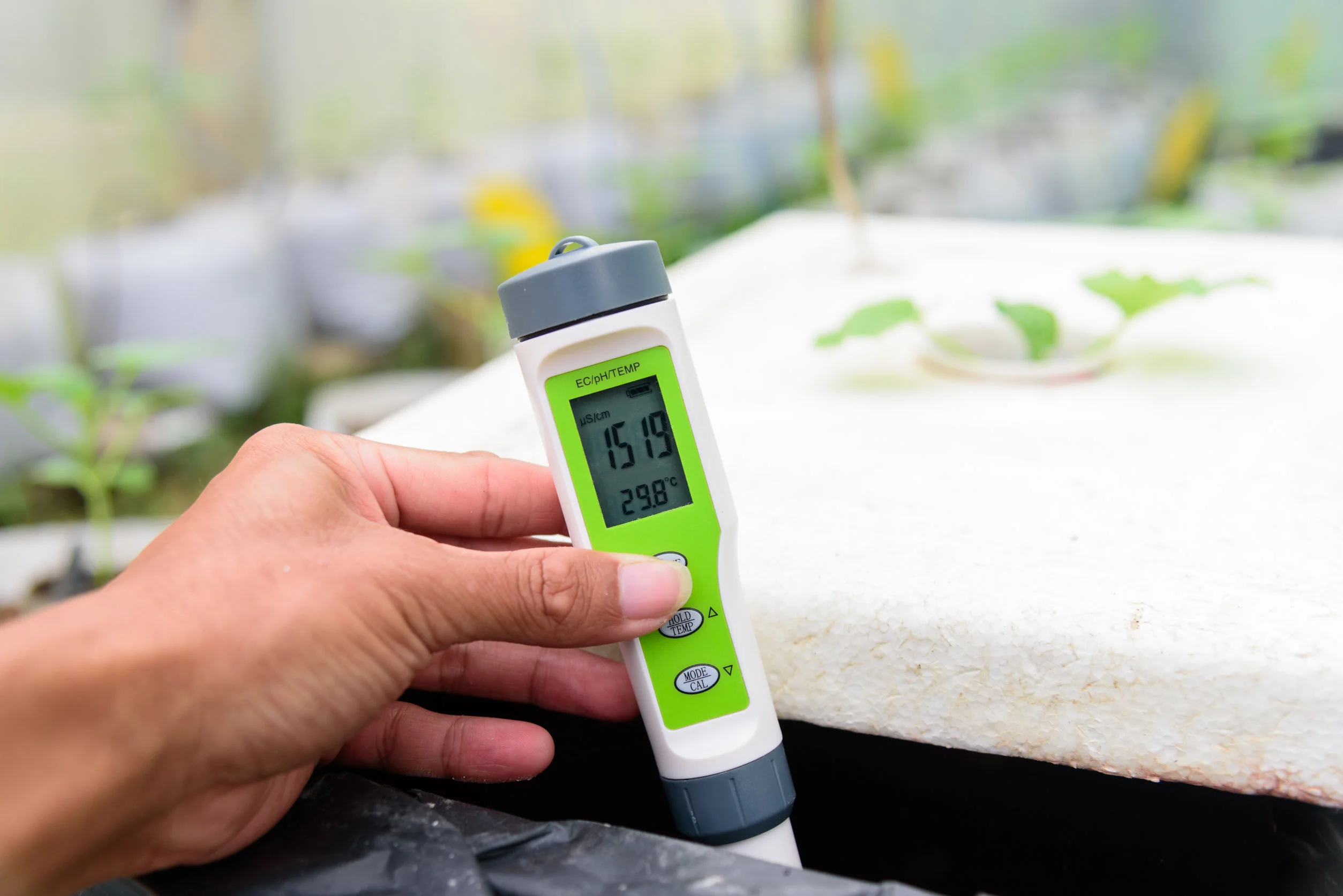Home>Gardening Basics>Understanding Soil>Why Is Soil Structure Important


Understanding Soil
Why Is Soil Structure Important
Published: February 10, 2024
Understanding soil and its structure is crucial for optimal plant growth and nutrient retention. Learn why soil structure is essential for healthy ecosystems and sustainable agriculture.
(Many of the links in this article redirect to a specific reviewed product. Your purchase of these products through affiliate links helps to generate commission for Chicagolandgardening.com, at no extra cost. Learn more)
Table of Contents
Introduction
The Importance of Soil Structure: A Foundational Element of Agriculture
Soil is a complex and dynamic ecosystem that serves as the foundation for all terrestrial life. Its significance in agriculture cannot be overstated, as it directly impacts plant growth, water retention, and nutrient availability. At the heart of soil's functionality lies its structure, a critical yet often overlooked aspect of soil health. Soil structure refers to the spatial arrangement of soil particles and the pore spaces between them. This arrangement influences the soil's ability to support plant growth, store water, and facilitate nutrient exchange. Understanding the role of soil structure is essential for optimizing agricultural practices and promoting sustainable land use.
The intricate interplay between soil structure and agricultural productivity is a fascinating subject that warrants exploration. By delving into the multifaceted relationship between soil structure and plant growth, water retention, nutrient availability, and erosion prevention, we can gain valuable insights into the fundamental processes that underpin successful crop cultivation. This article aims to shed light on the pivotal role of soil structure in agriculture and underscore its profound impact on global food security and environmental sustainability. Let's embark on a journey to unravel the significance of soil structure and its far-reaching implications for the agricultural landscape.
The Role of Soil Structure in Agriculture
Soil structure is a cornerstone of agricultural success, profoundly influencing the overall health and productivity of cultivated land. Its impact is multifaceted, encompassing crucial aspects such as water retention, nutrient availability, and erosion prevention. By understanding the pivotal role of soil structure in agriculture, farmers and land stewards can implement targeted strategies to optimize soil health and maximize crop yields.
The arrangement of soil particles and pore spaces directly affects the soil's capacity to support plant growth. A well-structured soil provides a stable environment for root development, allowing plants to anchor securely and access essential nutrients. Conversely, poor soil structure can hinder root penetration and impede the uptake of water and nutrients, compromising the overall health and vigor of crops.
Furthermore, soil structure profoundly influences water retention, a critical factor in agricultural sustainability. Well-structured soil with adequate pore spaces can effectively retain and regulate water, mitigating the impact of drought and excessive rainfall. This not only sustains plant hydration but also minimizes soil erosion, preserving the integrity of agricultural landscapes.
In addition to water retention, soil structure plays a pivotal role in nutrient availability. The arrangement of soil particles directly impacts the soil's capacity to retain and exchange essential nutrients with plant roots. A healthy soil structure facilitates the efficient distribution of nutrients, fostering robust plant growth and enhancing crop quality.
Moreover, the significance of soil structure in erosion prevention cannot be overstated. Well-structured soil with strong aggregation and adequate organic matter resists erosion, safeguarding against the loss of topsoil and vital nutrients. This is instrumental in maintaining the long-term fertility and productivity of agricultural land, ensuring sustainable yields for future generations.
In essence, the role of soil structure in agriculture is paramount, shaping the fundamental aspects of crop cultivation and land stewardship. By recognizing its far-reaching implications and implementing practices that promote optimal soil structure, agricultural stakeholders can foster resilient ecosystems and secure the foundation for sustainable food production.
Importance of Soil Structure for Plant Growth
The significance of soil structure for plant growth cannot be overstated, as it directly influences the accessibility of water, air, and nutrients essential for the development of healthy and robust vegetation. A well-structured soil provides an optimal environment for root proliferation, enabling plants to establish strong anchorage and access vital resources. The arrangement of soil particles and pore spaces profoundly impacts the physical support and nutritional sustenance available to plants, ultimately shaping their growth and productivity.
One of the primary ways in which soil structure impacts plant growth is through its influence on root penetration and expansion. A well-aggregated soil with ample pore spaces allows roots to navigate and proliferate, facilitating the uptake of water and nutrients essential for plant development. Conversely, compacted or poorly structured soil can impede root growth, limiting the plant’s access to vital resources and stunting its overall growth potential.
Furthermore, soil structure plays a pivotal role in regulating the availability of water and air to plant roots. Adequate pore spaces within well-structured soil enable the efficient movement of water and air, ensuring that plant roots remain adequately hydrated and oxygenated. This is crucial for maintaining the physiological processes essential for plant growth, such as nutrient uptake and metabolic functions.
Additionally, the arrangement of soil particles directly influences the soil’s capacity to retain and exchange essential nutrients with plant roots. A well-structured soil facilitates the efficient distribution of nutrients, fostering robust plant growth and enhancing crop quality. This ensures that plants receive the necessary elements for their development, ultimately contributing to improved yields and overall agricultural productivity.
In essence, the importance of soil structure for plant growth lies in its ability to create a supportive and nourishing environment for roots, enabling plants to access water, air, and nutrients essential for their development. By recognizing the profound impact of soil structure on plant growth and implementing practices to enhance soil structure, agricultural stakeholders can cultivate thriving vegetation and sustainably maximize crop yields.
Soil Structure and Water Retention
The relationship between soil structure and water retention is pivotal in agricultural ecosystems, profoundly influencing the availability of water for plant growth and the resilience of soil against drought and excessive rainfall. The arrangement of soil particles and pore spaces directly impacts the soil’s capacity to retain and regulate water, playing a critical role in sustaining agricultural productivity and environmental sustainability.
Well-structured soil with adequate aggregation and pore spaces exhibits enhanced water retention capabilities. The presence of macropores and micropores within the soil matrix allows for the absorption and storage of water, preventing excessive runoff and promoting sustained hydration of plant roots. This is particularly beneficial during dry periods, as soils with optimal structure can effectively retain moisture, mitigating the impact of drought and supporting plant resilience.
Furthermore, the capacity of soil to retain water is closely linked to its ability to facilitate water movement and infiltration. A well-structured soil with ample pore spaces enables water to permeate the soil profile, reducing surface runoff and enhancing groundwater recharge. This not only sustains soil moisture levels but also mitigates the risk of waterlogging, creating a balanced and conducive environment for plant growth.
In addition to supporting plant hydration, soil structure influences the distribution of water within the soil profile. Well-aggregated soil promotes uniform water distribution, ensuring that moisture is accessible to plant roots throughout the root zone. This fosters consistent plant hydration and minimizes the risk of water stress, contributing to sustained growth and productivity.
Overall, the relationship between soil structure and water retention is integral to the sustainability of agricultural landscapes. By recognizing the impact of soil structure on water dynamics and implementing practices to enhance soil aggregation and pore spaces, agricultural stakeholders can foster resilient ecosystems, mitigate the effects of water scarcity, and sustainably support plant growth.
Soil Structure and Nutrient Availability
The relationship between soil structure and nutrient availability is fundamental to the productivity and sustainability of agricultural systems. The spatial arrangement of soil particles and pore spaces directly influences the soil’s capacity to retain, exchange, and supply essential nutrients to plant roots. By understanding the interplay between soil structure and nutrient availability, agricultural practitioners can implement targeted strategies to optimize soil health and foster robust crop growth.
A well-structured soil provides an optimal environment for nutrient retention and exchange, fostering the availability of essential elements for plant uptake. The presence of adequate pore spaces within the soil matrix facilitates the movement and storage of nutrients, preventing leaching and ensuring that valuable nutrients remain accessible to plant roots. This promotes sustained plant nutrition and contributes to the overall vigor and productivity of crops.
Moreover, soil structure profoundly influences the soil’s cation exchange capacity (CEC), a critical aspect of nutrient availability. Well-aggregated soil with a high CEC can effectively retain and supply cationic nutrients such as calcium, magnesium, and potassium to plant roots, supporting essential physiological processes and enhancing crop quality. This ensures that plants receive the necessary elements for their development, ultimately contributing to improved yields and agricultural sustainability.
Additionally, the arrangement of soil particles directly impacts the soil’s capacity to support beneficial microbial activity, further enhancing nutrient availability. Well-structured soil provides a favorable habitat for soil microorganisms, fostering symbiotic relationships that facilitate nutrient cycling and mineralization. This biological activity contributes to the release and transformation of nutrients, enriching the soil and promoting a nutrient-rich environment for plant growth.
Overall, the relationship between soil structure and nutrient availability underscores the pivotal role of soil health in sustaining agricultural productivity. By promoting optimal soil structure and fostering nutrient-rich environments, agricultural stakeholders can enhance the availability of essential elements for plant growth, optimize crop yields, and cultivate resilient ecosystems.
Soil Structure and Soil Erosion
The relationship between soil structure and soil erosion is a critical consideration in agricultural and environmental management, as soil erosion poses a significant threat to the long-term productivity and sustainability of cultivated land. Soil structure plays a pivotal role in erosion prevention, influencing the soil’s resistance to wind and water erosion and safeguarding against the loss of topsoil and vital nutrients. By understanding the impact of soil structure on erosion dynamics, agricultural practitioners can implement strategies to mitigate erosion and preserve the integrity of agricultural landscapes.
Well-structured soil with strong aggregation and adequate organic matter exhibits enhanced resistance to erosion. The presence of stable aggregates and organic residues within the soil matrix promotes soil stability, reducing the susceptibility to erosion caused by wind and water. This is particularly important in regions prone to intense weather events, as well-structured soil can withstand erosive forces and maintain the integrity of the land.
Furthermore, soil structure influences the soil’s capacity to absorb and disperse the energy of rainfall, mitigating the impact of water erosion. Adequate pore spaces within well-structured soil enable water to infiltrate the soil profile, reducing surface runoff and minimizing the erosive potential of rainfall. This helps to sustain soil integrity and prevent the loss of valuable topsoil, preserving the fertility and productivity of agricultural land.
In addition to erosion resistance, soil structure plays a crucial role in promoting the development of a stable soil surface. Well-aggregated soil exhibits improved crumb structure and surface roughness, which reduces the velocity of surface runoff and minimizes the detachment and transport of soil particles. This contributes to erosion control, safeguarding against the loss of soil and preserving the essential organic matter and nutrients vital for plant growth.
In essence, the relationship between soil structure and soil erosion underscores the pivotal role of soil health in maintaining the long-term sustainability of agricultural landscapes. By recognizing the impact of soil structure on erosion dynamics and implementing practices to enhance soil aggregation and stability, agricultural stakeholders can mitigate the effects of soil erosion, preserve valuable topsoil, and sustainably manage cultivated land.
Conclusion
The intricate interplay between soil structure and agricultural productivity is a testament to the foundational role of soil health in sustaining global food security and environmental resilience. Throughout this exploration, we have unveiled the profound impact of soil structure on critical aspects of agriculture, including plant growth, water retention, nutrient availability, and erosion prevention.
From providing a supportive environment for root proliferation to regulating water dynamics and fostering nutrient-rich habitats, soil structure emerges as a linchpin of agricultural success. Its influence extends beyond the immediate needs of crops, shaping the resilience and sustainability of the entire agroecosystem. By recognizing the pivotal role of soil structure and implementing practices to enhance its integrity, agricultural stakeholders can cultivate thriving landscapes and sustainably maximize crop yields.
As we navigate the complexities of modern agriculture and strive to meet the demands of a growing population, the significance of soil structure cannot be overstated. It serves as a cornerstone of sustainable land management, offering a blueprint for nurturing resilient ecosystems and safeguarding the future of agricultural production. By prioritizing soil health and embracing the principles of soil structure optimization, we can forge a path toward a more sustainable and bountiful agricultural landscape.
In essence, the profound impact of soil structure on agricultural sustainability underscores the imperative of prioritizing soil health in agricultural practices. By fostering an environment where soil structure is optimized, we can cultivate thriving ecosystems, mitigate the effects of water scarcity, and preserve the integrity of agricultural landscapes for future generations.







